The Esperanza Pertusa Foundation has announced the projects awarded and recognized in the Third Edition of the Esperanza Pertusa International Photography Award. The event took place in the auditorium of the Ateneo de Madrid, within the framework of the PHotoESPAÑA International Photography Festival, and was attended by Maria Antonia García de la Vega, from the Ateneo de Madrid; Esperanza Navarro Pertusa, patron of the Foundation; Gertrud Gómez, curator; Ana Palacios, member of the jury of the 3rd edition of the Award.
The jury, formed by Isabel Muñoz, Claude Bussac, and Ana Palacios, selected three works among the more than 310 artists who submitted entries. Also, given the quality of the presented projects, the jury has made a special mention of 7 outstanding photographs. This year, we also have a Special Mention Esperanza Pertusa Foundation.
In this third edition of the Award, an overall 316 artists competed, 62% being international artists from 52 countries.
The winning projects are great names in photography on the national and international art scene:
First Award
Hijacked Education – Diego Ibarra Sánchez
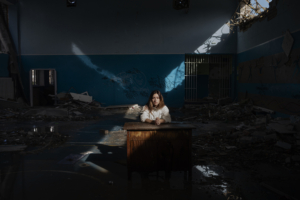
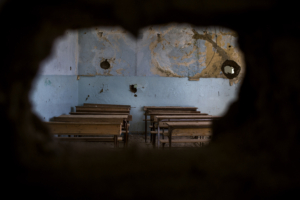
War does not end with the final sound of a bullet, an empty shell on the ground, or the raising of a flag. The open wounds of war write in blood the future of millions of children, and its effects reverberate in time. The increasing attack on schools, the militarization of children, the use of schools by armed actors, and exile set a lost generation at risk. Currently, around 264 million children worldwide do not have the opportunity to enter or complete school due to poverty, discrimination, armed conflict, emergencies, and the effects of climate change.
Hijacked Education is a photographic project where the author rocks between the boundaries of photojournalism and art to create a memory. Starting in 2012, it documents attacks on education and their consequences in countries such as Pakistan, Syria, Afghanistan, Nigeria, Nagorno Karabakh, Iraq, Lebanon, Ukraine, and Colombia.
The first photograph is a portrait of 16-year-old Daria Kechenovska inside her destroyed school. Lyceum #25 in Zhitomir was ruined on the morning of March 4 by a missile attack on the school. She had studied here for the past 11 years. «I want to be a soldier to defend my country.» September 29, 2022, Zhytomyr, Ukraine.
In the second photo, we can see the detail of a school destroyed by the Islamic State in northern Syria, Al Hasaka. Schools have become a prime target of the Islamic State, wiping out years of investment in education with the stroke of a pen. Schools are used as bases for armed actors, attacked, and children are recruited to fight. April 13, 2016. Al Hasaka, Northern Syria.
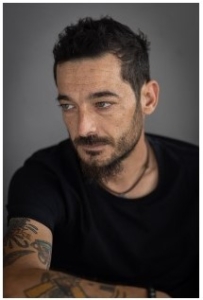
©José Miguel Marco
Diego Ibarra Sánchez is an Aragonese photojournalist based in Lebanon since 2014. A regular contributor to THE NEW YORK TIMES, he started working with them in Pakistan in 2012, where he lived for five years. He has covered the death of Bin Laden, the Pakistan floods, the fall of the caliphate in Mosul, the Yazidi genocide, and the rebirth of ISIS in Syria.
In September 2022, he published his first book, «The Phoenician Collapse,» a personal x-ray of Lebanon’s descent into chaos. In just a few months, the book was considered by LUCIE Foundation as the best independent photobook of the year.
He has recently covered the war in Ukraine and the aftermath of the earthquake in Turkey for the New York Times and the open wounds of war in Ukraine and Iraq for Unicef.
Runner-up Award
La Caida del Velo – Nuria López Torres
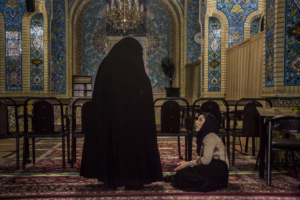
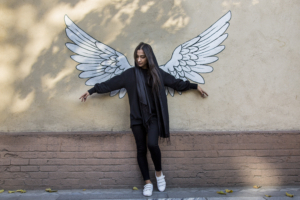
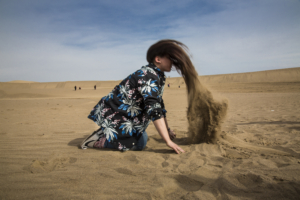
The political model originated by the Islamic Revolution that was declared victorious in 1979 has been a unique experiment in the world in which religion, in this case, Shiite Islam, has sought to mold a society of eighty million inhabitants under the aesthetic, behavioral, and ideological canons professed by its leaders. All men and most of them older. The male, patriarchal, and religious vision has defined women’s lives and their relationships with their bodies, sexuality, and feelings for more than 40 years.
Women’s big or small battles for their rights have become one of the most hated enemies of the Islamic Republic. For people loyal to the System, the veil not only protects women’s morals, but it also is one of the pillars of the Islamic Republic.
In recent years more and more women in Iran are defying the strict rules of Islamic dress and are turning the veil that must cover their hair into a weapon of vindication of their rights and freedoms. The death of 22-year-old Mahsa Amini at the hands of morality police for not wearing correctly the hijab has sparked protests in Iran not seen since 2009. A considerable part of the younger Iranian society has taken to the streets, eager for freedom and change. Despite the intense repression the government is exercising against women, concentrated in recent months chiefly on young women and teenagers, they continue to seek forms of expression and spaces of freedom.
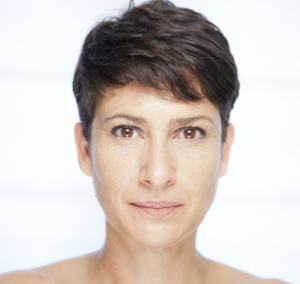
© Nuria López Torres
Nuria López Torres, born in Barcelona, was trained at the Institute of Photographic Studies of Catalonia and at the School of Image and Design (IDEP) in Barcelona, where she completed a master’s degree in photojournalism.
A documentary photographer. She has focused her work on issues related to the world of women, identities, violence, and sexualities. She approaches these themes from the perspective of social anthropology and turns some of her work into photographic essays. She combines her projects with collaborations as a freelance photographer in national and international media such as El País, Interviú, Yo Dona, Marie Claire, Le Monde, CNN, Al-Jazeera or Terra Mater, among others; curating photographic events and teaching at specialized photography centers.
His work is part of collections such as the Isonomía Foundation of the University Jaume I of Castellón and the Visible Foundation of Contemporary Art. Even in 2016, she published the Free Sex and Revolution in Cuba.
Runner-up Award
La Otra Orilla – Santi Palacios
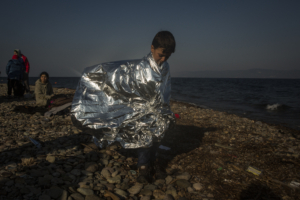
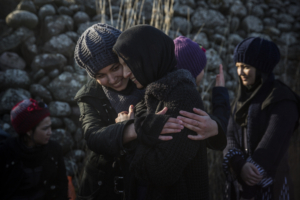
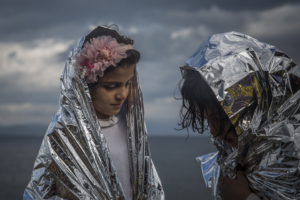
The main migratory routes connecting Africa and the Middle East to Europe via the Mediterranean Sea: the western route, which connects the coasts of Morocco and Spain; the central route, which leads from Libya to Italy; and the eastern route, which links the coast of Turkey to the Greek islands, represent one of the most dangerous stages of the journey that thousands of people undertake every year to reach Europe.
Spain; the central route, which leads from Libya to Italy; and the eastern route, which links the coast of Turkey to the Greek islands, represent one of the most dangerous stages of the journey that thousands of people undertake each year to reach Europe from Africa and Asia.
According to the International Organization for Migration, at least 26,833 people died while attempting to cross the Mediterranean between 2014 and May 2023, a figure that only reflects the people on record. The growing political debate within the European Union is focused on the protection of external borders, with marginal attention being paid to developing effective strategies to protect the rights of those attempting to reach the continent.
Those clandestine routes on which so many people lose their lives are a collection of decisive, often chaotic, and difficult moments: border crossings, departures, arrivals, waits, losses, and farewells. This photographic project seeks to capture fractions of calm and reunion that sometimes occur at the precise moment when those who manage to cross the sea reach the other shore.
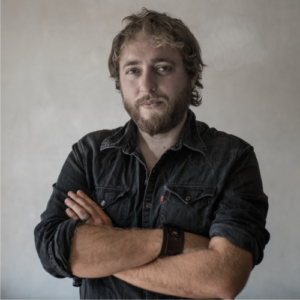
Santi Palacios is a photojournalist and editor-in-chief of Sonda Internacional, a non-profit media outlet specializing in visual journalism on the climate crisis.
Santi has focused on migrations, conflicts, and human ecology, interests derived from his training as a sociologist. His work has been published in major magazines and newspapers around the world, has been exhibited in dozens of cities, and has received numerous national and international awards, including a World Press Photo, the Ortega y Gasset journalism award from El País, or the Spanish National Photojournalism Award two years in a row.
In 2016 he was part of the team nominated by the Associated Press for the Pulitzer Prize in Breaking News Photography, and in 2018 he was selected by the World Press Photo 6×6 Talent Program in Europe. Santi often collaborates with 5W Magazine, the NGO, Open Arms, and so on. He was a regular contributor to Associated Press between 2014 and 2018, and he has also occasionally freelanced with other media in the past, such as The New York Times, TIME Magazine, CNN, and El País.
Special Mentions
Pain is Mightier Than Sword – Arpan Basu Chowdhury
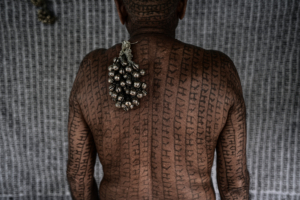
The Ramnami community of Chhatisgarh (India) is the most recognized example of a nonviolent movement against the scourge of caste discrimination that prevailed in pre-independence India and whose practice continues nowadays.
This project is devoted to the Ramnami community’s ascetic life, nonviolent approach, and vow to peace. For generations, they have suffered from poverty, as social exclusion separated them from the general flow of education and trade. But the beauty of their chanting, the calmness of their mind, and their nonviolent speech heal the hardships brought by the curse of exclusion and poverty.
Desenterrar la Memoria – Eduardo Sánchez de León Herencia
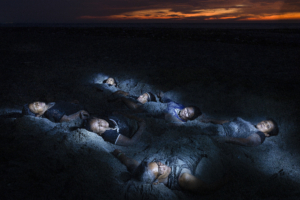
This photographic work is a journey through the territories most affected by the armed conflict, Buenaventura, La Ciénaga, and El Salado, taken as a sample of a country crossed by violence. At the same time, it is an exercise of memory and of giving voice to women who have been constant victims of this war that pierced their memories and bodies. Their voice and example are a hope for a future of peace in the country. Through the image, the people photographed decide how they want to see their problems of exile and death represented. There are also projection portraits of loved ones, who were killed or forced into homeless during the conflict.
Sobreviviendo entre Luz y Sombras – Fabio Teixeira

This play shows unemployed women and men recycling waste to find copper, iron, aluminum, and toys to repair and donate to children. These anonymous workers are victims of racism and violence but also suffer from diseases caused by garbage.
Most of these people are in street situations, confronting violence and police extortion. The day-to-day life of these people is a struggle for survival.
Ng’akipi (Agua) – Gisela Pretel
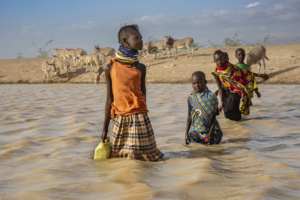
Turkana, located in the remote northwest corner of Kenya, is an unwelcoming, hostile, and arid land inhabited by almost 1 million people who are struggling with the effects of climate change.
The «Ng’akipi» project, which means Water in Turkana, focuses on the consequences of the violation of the right to water in this corner of the world, which affects the most vulnerable: women and children.
La Jungla – Hanna Jarzabek
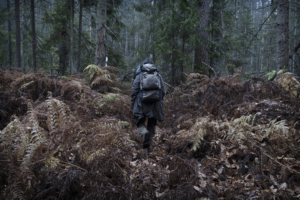
Over the past year, Poland has taken in 1.5 million Ukrainian refugees and provided them with the necessary assistance, including work and residence permits. However, a few kilometers to the north, on the border with Belarus, refugees predominantly from the Middle East and Africa encounter extremely harsh anti-immigration policies.
The forest, nicknamed by some refugees «The Jungle,» is a dangerous and challenging place to cross, especially for those unfamiliar with the harsh climate of northeastern Europe. Many refugees stay trapped in the forest for long periods. There, they face extreme conditions, such as lack of food and water, and, in winter, a high risk of death from hypothermia.
Smor San – Steff Gruber
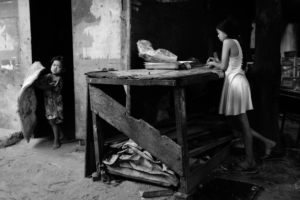
Smor San is a community living in a cemetery in Phnom Penh. Its inhabitants have built makeshift houses on tombs and coffins or have inhabited empty burial chambers. Here they dine, watch television, hang their clothes out to dry, care for their children, and sleep just inches away from the dead. They moved to the cemetery, with some 200 graves, after sand dredging caused their houses on the riverbank to collapse.
Steff Gruber’s documentation of life in Smor San is a long-term project that began in 2019 and is part of a series on Cambodia’s poor landless communities.
Entre Ruinas – Victòria Rovira Casanova
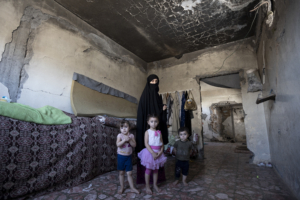
‘Among Ruins’ shows the current situation of displaced and socially excluded women living with their children in bombed and ruined buildings in the city of Raqqa (Syria). This photograph shows families who have fled their former homes in cities such as Palmyra or Deir al-Zor occupied by the Islamic State, and they have no option to return.
Special Mention – Esperanza Pertusa Foundation
Three Episodes of Her Gaze – Jahid Apu
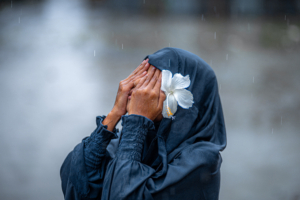
A madrasa (Islamic school) student enjoys the pouring rain in front of her madrasa while keeping her hijab on after the class break. In Islam, women usually cover everything except their hands and feet. This unique inclusion of freedom and courage in the rain by a young teenage girl from a small town in Bangladesh reveals her inner beauty, conflict, and strength at the same time.


